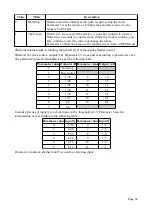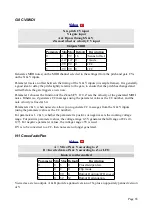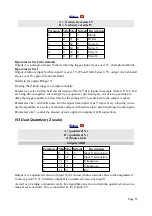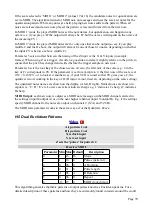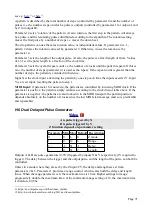
X is retrigger CV
Y is start position CV
Z selects the sample
A is left audio output
B is right audio output
Z press retriggers sample
Parameter Min Max Default Description
0
0
99
0
Folder.
1
0
99
0
Envelope time.
2
0
127 0
Start offset.
This algorithm continuously plays audio files, in a manner very much inspired by Tom Whitwell's
module.
The current audio file is selected with the Z knob/CV. It plays, forever, at its natural speed (see the
algorithms below if you want to control the speed), looping when it gets to the end; or it plays until
the end of the file and stops, depending on the 'loop' setting.
X is a retrigger input. A trigger pulse in excess of 1V will reset the playback position. The initial
playback position is set by the Y input. The voltage range 0-8V corresponds to the length of the file
so e.g. 0V input (or no input) sets the initial position to the start of the file, 4V input sets the initial
position to halfway through the file, etc.
Parameter 2 also offsets the sample start point. A parameter value of 96 corresponds to the full
length of the file; values above 96 are treated as 96. The reason for this scaling is that when
automating the parameter via MIDI it is straightforward to exactly dial in useful fractions of the
length e.g. 48 for half way, 32 for a third of the way through etc.
When switching between files, the playback position is maintained, modulo the length of the new
file. For example, if you're 5 seconds into a 10 second file:
•
if you switch to a 20 second file, the position will be 5 seconds into the new file.
•
if you switch to a 2 second file, the position will be 1 second into the new file.
(Though see the 'useStartOnSampleChange' playlist option above to override this behaviour.)
A & B are the left & right audio outputs respectively.
Parameter 0 chooses the sample folder. These are sorted alphabetically, or in the order specified in
the playlist, if one is provided.
Parameter 1 sets the trigger mode and envelope time. If the parameter is 0, the trigger input is
simply that – only a positive-going edge is used, to retrigger the sample. If the parameter is 1 or
more, then the trigger input is treated like a gate: a positive-going edge retriggers the sample, but
also when the trigger CV goes low, the sample playback stops. The value of the parameter specifies
the length of a decay envelope that is applied to the sample, so it can stop suddenly or gradually
fade out.
MIDI Input
: MIDI note on & off messages are handled equivalently to a trigger or gate on the X
input – that is, a note on retriggers the sample, and if the envelope time is non-zero, a note off will
stop the playback.
Page 75


